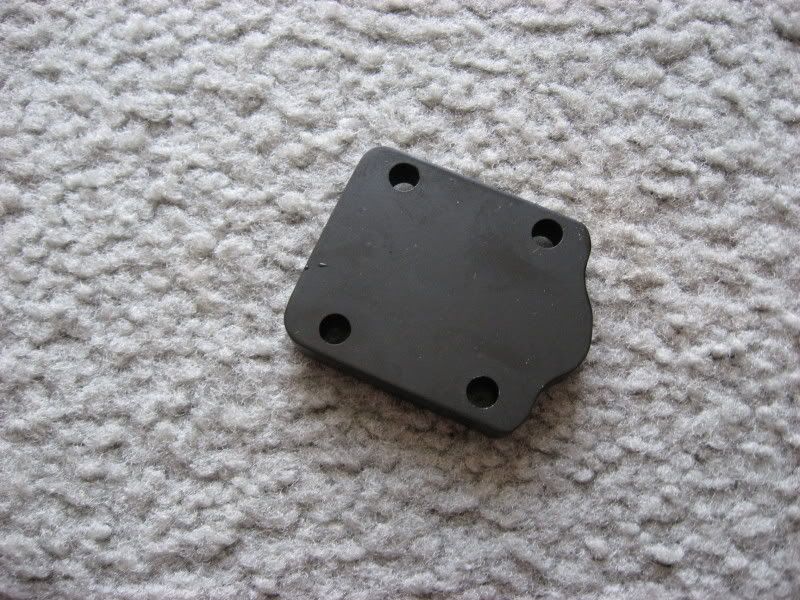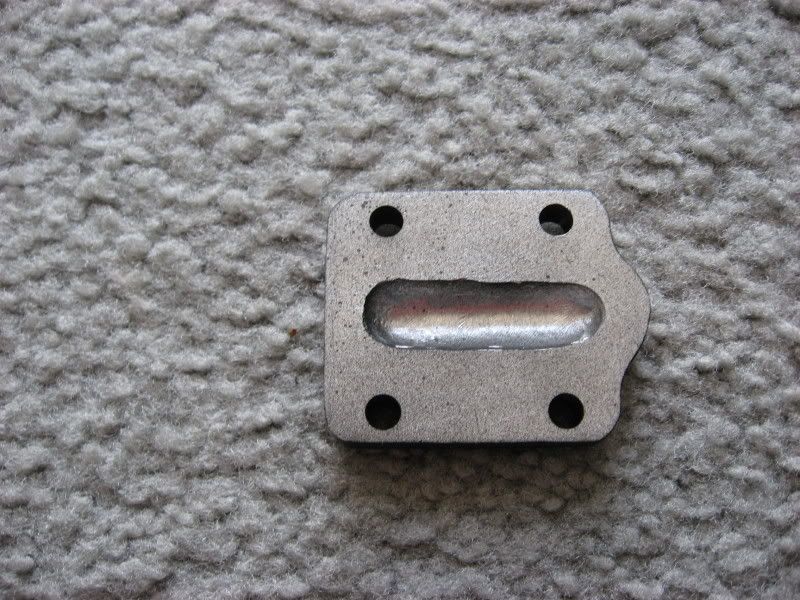 Okay, I'll bite. Why are you guys taking off/bypassing/blocking the front fork anti-dive assemblies on your GS1100/1150's???? I'm talking for street riding, not racing. Stock front end, no progressive springs. Did the engineers miss something that hurt the bike rather then help it? What's the scoop???
Okay, I'll bite. Why are you guys taking off/bypassing/blocking the front fork anti-dive assemblies on your GS1100/1150's???? I'm talking for street riding, not racing. Stock front end, no progressive springs. Did the engineers miss something that hurt the bike rather then help it? What's the scoop???
Announcement
Collapse
No announcement yet.
Anti-dive haters?
Collapse
X
-
 Big Nick
Big Nick
Anti-dive haters?
 Okay, I'll bite. Why are you guys taking off/bypassing/blocking the front fork anti-dive assemblies on your GS1100/1150's???? I'm talking for street riding, not racing. Stock front end, no progressive springs. Did the engineers miss something that hurt the bike rather then help it? What's the scoop???
Tags: None
Okay, I'll bite. Why are you guys taking off/bypassing/blocking the front fork anti-dive assemblies on your GS1100/1150's???? I'm talking for street riding, not racing. Stock front end, no progressive springs. Did the engineers miss something that hurt the bike rather then help it? What's the scoop???
Tags: None
-
 Kris V
Kris V
They work good. A lot of people don`t like the way it makes the bike handle. Quite a few people valves don`t work due to lack of maintenance so the block them off. They have always worked good for me.
-
Forum LongTimerGSResource Superstar
Past Site Supporter
Super Site Supporter- Mar 2006
- 36218
- Torrance, CA
Stock anti-dive sucked. It created spongy front brake feel and the front end still dove about 90% as much as it would without anti-dive.Ed
To measure is to know.
Mikuni O-ring Kits For Sale...https://www.thegsresources.com/_foru...ts#post1703182
Top Newbie Mistakes thread...http://www.thegsresources.com/_forum...d.php?t=171846
Carb rebuild tutorial...https://gsarchive.bwringer.com/mtsac...d_Tutorial.pdf
KZ750E Rebuild Thread...http://www.thegsresources.com/_forum...0-Resurrection
Comment
-
 Kris V
Kris V -
 TheCafeKid
TheCafeKid
I disagree respectfully Kris. The antidive blows. But not for the crappy lever feel. For me it's simply because it's not consistant. One time it works great. The next it loads unevenly. The next not at all. I would rather deal with fork dive ( which is remedied greatly by good stiff forksprings) and KNOW how the bike is going to react every time rather than have to guess what's going to happen should something get hairy. Valve emulators also do an excellant job of helping with dive.
Comment
-
It always seemed lame to me. Who cares if it dives?Originally posted by TheCafeKid View PostI disagree respectfully Kris. The antidive blows. But not for the crappy lever feel. For me it's simply because it's not consistant. One time it works great. The next it loads unevenly. The next not at all. I would rather deal with fork dive ( which is remedied greatly by good stiff forksprings) and KNOW how the bike is going to react every time rather than have to guess what's going to happen should something get hairy. Valve emulators also do an excellant job of helping with dive.
Bikes do that...
I have several bikes that dive however much, some with sagged springs, some with good tight ones, and a BMW which does not sink at all when the brakes are on. I don't know how it works but when you pull the lever the front suspension is done moving.
And when stopping hard I can't even tell the difference unless I make it a point to think about the diving... You get used to what you are riding and ride accordingly.
The BMW sure does stop quick though..
Comment
-
 jwhelan65
jwhelan65
When I rebuilt my forks on the 700, I completely disassembled the anti dives and replaced the o-rings inside the modular plunger and it seems to have rendered some of the issues we all experience. I also replaced the stock springs with a set of Progressives and 1" spacers which I highly recommend. A fresh set of springs and a small amount of air pressure IMO will provide more stability and almost eliminate the function of the anti-dive mechanism. This allows for a stock look and you won't have to fab anything.
my .02Last edited by Guest; 11-15-2009, 12:25 PM.
Comment
-
Well, Nick, there you have it. Six responses, basically six different answers. Pretty much what I expected.
The way the GS anti-dive works is by using brake line pressure to move a mechanism that changes the damping ability of the forks. The "spongy feeling" that some are experiencing is that extra lever movement that it takes to move the mechanism before there is enough pressure in the lines to actually squeeze the calipers for braking effort. This is complicated by the fact that there is another chamber that needs to be bled of air when changing the brake fluid. Another place for air to hide simply means another chance for "spongy" brakes.
TCK mentioned inconsistent results. That could be the result of the mechanism not being clean enough to move freely. I don't know exactly how they move, I have never had them apart, but it makes sense to me.
I have never ridden a GS with anti-dive long enough to really notice the difference. The bikes that I have ridden that were not mine, were so different in handling, I didn't know if it was steering geometry, brand of brake pads, tires (and pressures), seating position or what. It was just so different, I figured "that's the way this bike rides".
The only bike I have ridden consistently with that has anti-dive is my Wing. It activates a little differently. The caliper mount has a pivot on one end. The end that is free to move has a small piston to change the damping. When the brakes are applied, the caliper moves (pivots) about 1/4", pushing the piston. Based on the rotation speed of the wheel, there is virtually NO delay in braking action, so I don't really notice anything.
.sigpic
mine: 2000 Honda GoldWing GL1500SE and 1980 GS850G'K' "Junior"
hers: 1982 GS850GL - "Angel" and 1969 Suzuki T250 Scrambler
#1 son: 1986 Yamaha Venture Royale 1300 and 1982 GS650GL "Rat Bagger"
#2 son: 1980 GS1000G
Family Portrait
Siblings and Spouses
Mom's first ride
Want a copy of my valve adjust spreadsheet for your 2-valve per cylinder engine? Send me an e-mail request (not a PM)
(Click on my username in the upper-left corner for e-mail info.)
Comment
-
Forum LongTimerGSResource Superstar
Past Site Supporter
Super Site Supporter- Mar 2006
- 36218
- Torrance, CA
As Steve states, the damping circuit in the forks is different; when the anti-dive is activated the compression damping increases although it's not a dramatic change.
Some people remove the anti-dive mechanism from their forks and replace them with a block off plate. What people don't realize is that with a flat plate installed over the oil holes, the forks behave like the anit-dive is activated all the time. What you really should do is groove the block off plate so oil can flow between the two holes. Case in point of how useless the anti-dive is, is when people report improvements in their forks when flat block off plates are installed; many people can't even tell the difference in the fork action despite the fact that the compression damping has increased. What I noticed by using flat block off plates is poor compliance in the fork - more of a ride quality thing than anything else. Grooving the plate returned the fork damping to normal.

 Last edited by Nessism; 03-21-2013, 12:47 PM.Ed
Last edited by Nessism; 03-21-2013, 12:47 PM.Ed
To measure is to know.
Mikuni O-ring Kits For Sale...https://www.thegsresources.com/_foru...ts#post1703182
Top Newbie Mistakes thread...http://www.thegsresources.com/_forum...d.php?t=171846
Carb rebuild tutorial...https://gsarchive.bwringer.com/mtsac...d_Tutorial.pdf
KZ750E Rebuild Thread...http://www.thegsresources.com/_forum...0-Resurrection
Comment
-
Mine seem to work fine. I have the basic fixes (ss lines, progressive springs, fresh 10w, new seals). The harder I grab the brakes the stiffer the forks get. If I ever get the chance to ride a bike with good brakes and suspension Ill find out how crappy the EZs system is.............82 1100 EZ (red)
"You co-opting words of KV only thickens the scent of your BS. A thief and a putter-on of airs most foul. " JEEPRUSTY
Comment
-
 jwhelan65
jwhelan65
Technical definition....The brake line of the front brakes master cylinder leading to the caliper is connected by a hose to the antidive device. When the master cylinder's hydraulic line functions to brake the front wheel, it simultaneously operates the anti-dive device's plunger, which regulates and limits the flow of oil in the front fork. This reduces the compression of the front fork, which also reduces the extension of the rear shock absorber. Hence, the device serves to counteract the change in the motorcycle's attitude during braking." (from the Suzuki GSX 750/1000/1100 Supplementary Service Manual, Sept. 1981, p.6)
Comment
-
Here are the anti dives on my ED. Forks are 87/88 GSXR 1100 RSU forks (41mm), with modified fender mounts to accept stock ED fender. Wheel is 88 GSXR 1100 3 spoke, with 1st Gen GSXR brakes.
Forks have Race tech cartridge emulators ($175) which requires disabling all of the OEM internal damping so there is no need to provide the alternate flow as Ed describes. The anti dives off the 83 GS1100ED fit right on the GSXR forks. I added a think brass block off plate underneath the anti dive unit after taking all of it's internal out.
You will notice that I did add the brake line to complete the appearance. However the double banjo at the brake caliper has the line to the anti dive soldered shut.
I use a dremel to open up the pin hole in the banjo so that the solder blob is forced into a tapered hole. I did this the first time using JB weld, but the solder is more reassuring as the brake fluid is unlikely to attack it.
After spending about 40 hours to get those fender mount completed(hand made mounts, jib,brasing with HTS2000), the minor expense of the antidive plumbing to complete the effect was minor.Last edited by posplayr; 11-15-2009, 03:52 PM.
Comment
-
 Guest
Guest
I am guessing there is a reason Suzuki didn't use them for long on the bikes.
Personally, never liked the feeling or performance of them.
I think it was an engineering gamble that did't pay off. Much like, I am guessing again, the short stint of attaching the brake arm to the frame instead of the swingarm. Then armless caliper and back again to the torque arm attached to the swingarm again.
Comment
-
 spyug
spyug
On my XS 650 project I used Racetech cartridge emulators and I was very impressed. Absolutely no dive on braking. It does make a difference from non regulated forks I think.
Now on my 750 I think the antidives are working properly as the bike does not squat or dive on braking. Even hard emergency braking and she stops with minimal fuss.
On the Kat project I notice the antidives have been blocked so I'm thinking the racetechs might be in order. I'll get her going first and see how she runs before I put the dollars in, however.
Given the option, I'd go for non diving on stops everytime.
Cheers all,
Spyug
Comment
.png)

Comment